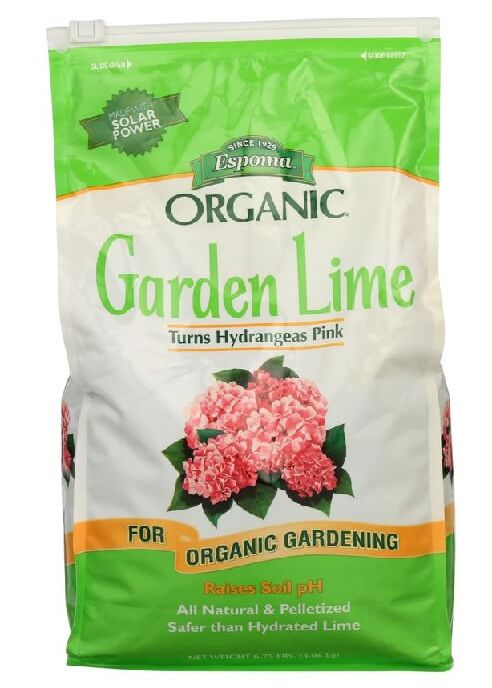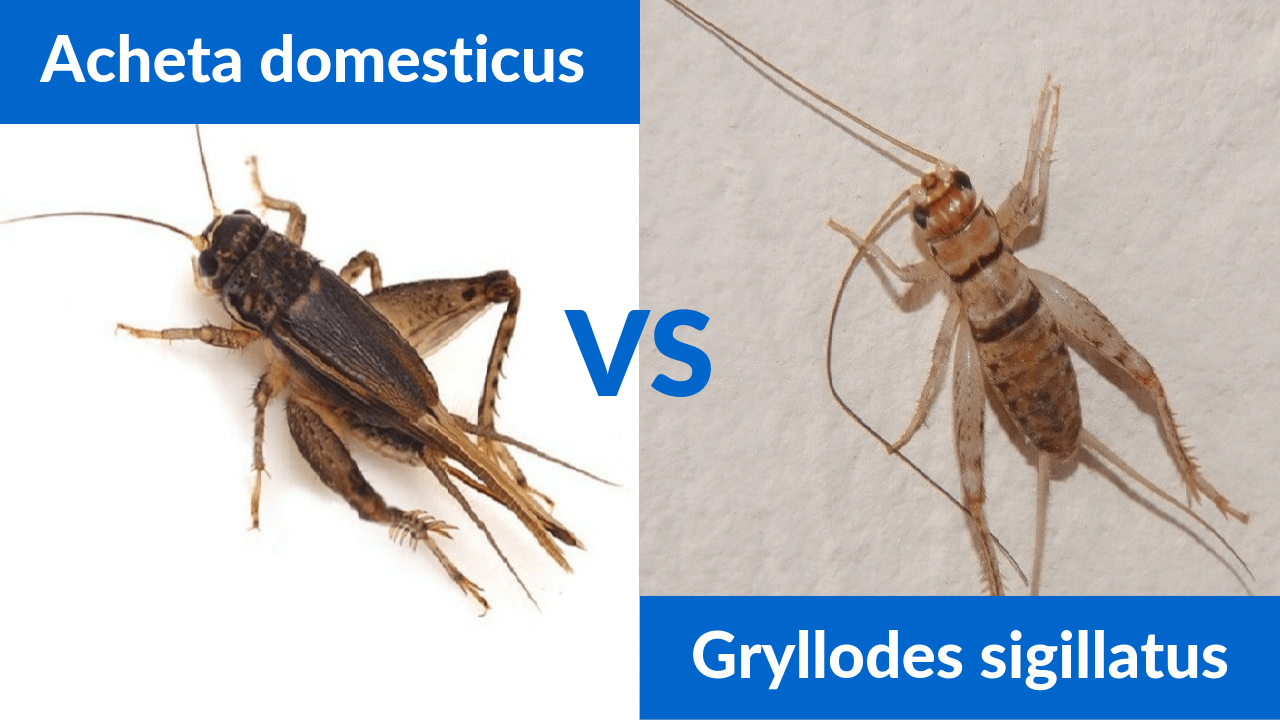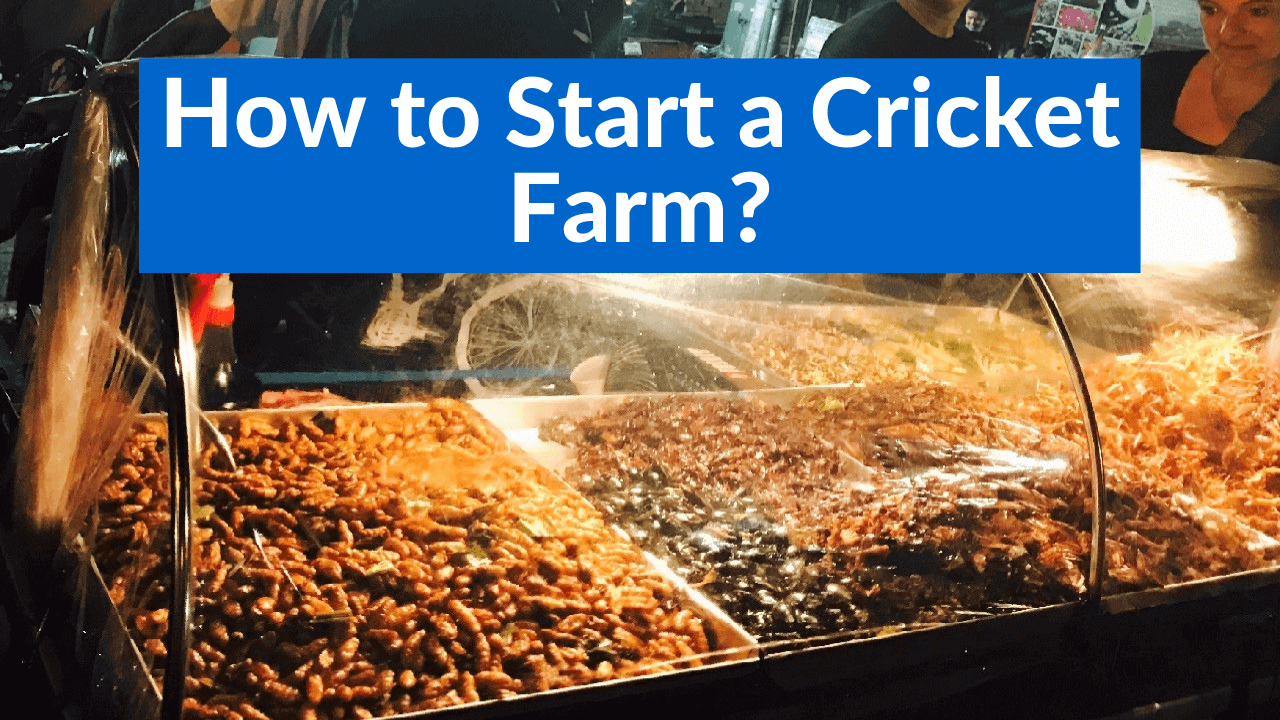Cricket Farming
Cricket Farming: Substrates, Egg Laying, and Incubation Tutorial 5

Substrates, Egg laying and incubation process so you can get baby crickets.
Before you give a substrate for your crickets to lay eggs, you need to make sure that they are physically capable of laying eggs. A lot of people put up the substrate too early when the crickets aren’t old enough. One of the easiest ways to tell is just to use your senses.
Listen to the Chirping: When you hear crickets chirping that means males have reached full adulthood. They are getting pretty ready to mate and lay eggs.
But when you first hear chirping, they’re not physically capable quite yet. Wait for another 1 or 2 weeks or maybe 3 weeks afterwards, so most of your crickets are full adults and you can maximize the number of eggs you can get in a short amount of time.
Then after it’s been a few weeks, when you didn’t hear that initial chirping and at this point, you may even see sacks of sperm on some of the crickets. At that moment you know that it’s perfect to get your crickets to lay eggs.
Substrates
You need to give them a good substrate, something that female crickets can sort of bury their eggs in. Female crickets want to stick her ovipositor into some sort of surface that she can break the ground with, sort of like dirt and deposit the eggs slightly below the surface. If you don’t have something like this, they’re not gonna have something to lay their eggs in and they may fruitlessly try to lay eggs in areas where they shouldn’t.
For the substrate use either Peat Moss or Coconut Husk. Coconut husk might be a little bit more preferable because it’s more sustainable.
Before you give peat moss or coconut husk to crickets, you need to do a few steps to prepare it.
1. Microwave the substrate before use
Peat moss that you have bought, you don’t know if there’s already something living inside of it. Other animals could have laid their eggs in it because it is such a popular enticing substrate. So what you can do is, take whatever substrate you are gonna use and put it in the microwave for a minute. This will kill anything that’s in it.
2. Mix limestone with the substrate to make it more alkaline

Once you microwave it, it’s still not ready to go in with your crickets because it’s a perfect substrate and a bunch of things besides crickets want to lay their eggs in it.
Even if your Brooder has a lid on it, there is a chance that things are going to get into there and also lay their eggs beside your cricket eggs. This especially happens often with fruit flies. Fruit flies can get into your bin because they can fit through the cracks of your screens and additionally if you put fruit your bins, they’re going to be extra incentivized to get into that bin and lay their eggs.
We need to deal with fruit flies because fruit flies will lay their eggs in the substrate and one of the problems is fruit fly eggs hatch much quicker than cricket eggs. So while you’re incubating your substrate, you have a risk of having colonies of fruit flies being hatched all over your farm.
A little trick that you can use is to change the pH content of the substrate a little bit by just adding a little Organic Garden Lime. This is just some limestone and what’s great about limestone is its alkaline. You may have done this in your garden at home, you add it to change the pH of the soil. That’s exactly what we want to do because if your substrate is slightly too alkaline, fruit fly eggs will not hatch. Fruit flies will still lay those eggs but they’ll never hatch and what’s great is when baby crickets hatch, they can eat those eggs.
Take a quarter of a teaspoon of this limestone and mix it up with your substrate.
3. Moist the substrate
You need to make sure that the substrate is moist. It needs to be moist enough so the female cricket can deposit the eggs about a centimeter below the surface. Don’t get it as wet where there’s mud or standing water but you want to get it moist to the touch and something that’s not going to dry out right away.
Once you have it you can put this container into your bin.
What sort of container do you want to put your substrate?
It really doesn’t matter. You can use like old plastic salsa containers. You can use it many times. It’s a decent upsize we’re a bunch of crickets can lay eggs at one time. They are transparent and when crickets lay their eggs, you can actually see along the side how densely they’ve been laying their eggs. That’s a problem some people have is, they’ll take the substrate out of the cricket Brooder before many eggs are laid and this is just an easy way because you can see right into the dirt without digging around to see if they’ve laid eggs.
If you wouldn’t get a lot of eggs though, use a bigger container than this just so more crickets can lay eggs at one time. Once you put the container in the brooder, they are biologically driven to go and lay eggs and if there’s not enough space for all the crickets who want to lay eggs, they won’t do, they’ll fight to kill and you would not get as many eggs as you’d like.
For the bigger size, you can use an 8 by 8 cooking pan. It’s reusable. One of the problems with this is it’s not transparent, so you can’t see how densely crickets eggs are being laid. You have to dig in the dirt a little bit to see if it’s really damped.
Some people don’t like giving open containers to the crickets because female crickets may not be interested in laying their eggs. They may just like the surface as an area to burrow and they’ll dig. If it is a problem for you, put a layer of the screen on top of the container and then put the substrate right up to the screen. What that does is, it allows the females to walk on the screen and she can deposit her eggs through the holes of the screen but no one is able to go play around and dig in the dirt because the screen is preventing them from getting actually into the substrate.
Egg Laying
Put the substrate in the bin. Depending on the number of crickets you have, if a lot of your crickets are mature enough and ready to lay eggs, you will get plenty of eggs in a 24 hour period. Make sure that it’s nice and warm inside the Brooder. If you don’t have a temperature that the crickets like in the 80s or close to 90 you’re not going to get any eggs later. This is a time where you’re going to make sure your heaters are running at least for this 24 hour period when your crickets are laying eggs.
Collect the eggs after 24 hours
Some people think well they could just put that in there and can leave it in for a week and collect a bunch of eggs.
If you’ve been letting crickets lay eggs per week, when it comes time for those eggs to hatch, they’re gonna hatch over the course of a week. It’s just a lot easier to deal with crickets, when they all hatch at the same time within a 24 hour period, instead of having some hatching Monday, some hatching Tuesdays, sometimes on Wednesday. You don’t want to have crickets that have hatched multiple days apart from each other because then the older crickets even though they may only be a few days older may eat the smaller crickets.
Incubation
Your crickets have laid eggs, 24 hours have passed, it’s time to incubate them. What’s really important about it is the heat and humidity. You want it to be really humid around 80 to 90 percent humidity and above. This is really important because it keeps everything really moist. You want that substrate to remain moist to the touch. If it starts to dry out, there’s a risk that the eggs are gonna dry out as well and that means they’re not gonna hatch.
Depending on the humidity that you have you may have to add additional moisture into your process.
Commercial farms have incubation rooms where humidifiers are running on all the time. The humidity stands around 85%, substrate stays really moist and we don’t have to worry about the eggs drying out.
In backyard farm, add water probably twice a day, keep it wet and put it back under the heat lamp where it’s around 90 degrees. Make sure substrate don’t dry out.
The problem with this is you have to add water twice a day and it’s not humid very much in my backyard farm and so it’s kind of a pain. To make it more humid without running a humidifier there are few tricks:
Cover the substrate with a plastic sheet or kitchen wax paper to keep some of the moisture in there. No need to add any more water.
One problem about doing it this way is that mold will start to form in your substrate. What you can do is take those out or just picked it up or brush it out and as long as you do that every day you should be fine. You can also run an air filter to clean the air of any sort of fungi particles but if you want to save money just cover it with plastic sheeting and pull out the mold once a day.
How long does it take to incubate?
As long as you can keep the eggs wet, moist and humid they will hatch but it’s really dependent on the temperature. In a commercial farm, If you are able to keep the temperature at around 90 degrees, you can get the cricket eggs to hatch at around 9 or 10 days.
If you don’t have it that hot, it’s going to take longer and longer. If you are in no rush to get the eggs to hatch as soon as possible, keep it around 85 degrees, so you don’t have to heat it up to 90 degrees and you can save a little bit money on electricity. At 85 degrees it takes about 11 or 12 days for the eggs to hatch.
In backyard farm, there’s a little bit of variability, If you use heat lamp it might take 14 or 15 days to hatch even though it’s 85 degrees.
If you haven’t used a heat lamp and you just left the natural environment to heat the eggs, they will hatch as long as it’s sufficiently warm enough for a long enough time.
One time in the summer, the average temperature was probably around 80 during the day and would get down to around 50 at night without any additional heating, it took about 35 days for my eggs to hatch. So I really do think there’s really this linear relationship between the heat and how quickly the eggs will hatch. You can do it in as few as nine days or if you want to save a little bit on heat you should count on 15 even 20 days.
-

 Cricket insect7 years ago
Cricket insect7 years agoNatural Insecticides to Get Rid of Insects
-

 Cricket Farming5 years ago
Cricket Farming5 years agoStarter Crickets: Acheta domesticus vs Gryllodes sigillatus Tutorial 2
-

 Cricket insect5 years ago
Cricket insect5 years agoCricket Insect
-

 Cricket Farming5 years ago
Cricket Farming5 years agoHow to Start a Cricket Farm? Tutorial 1
-

 Cricket Farming5 years ago
Cricket Farming5 years agoHow to Take Care of Crickets, Maintenance, Cleaning and Feeding Tutorial 7
-

 Cricket insect5 years ago
Cricket insect5 years agoWhat Do Crickets Eat What To Feed Your Pet Crickets
-

 Cricket insect7 years ago
Cricket insect7 years agoWhat Is Organic Insecticide | Organic Gardening
-

 Cricket Farming5 years ago
Cricket Farming5 years agoHow do You Prevent your Crickets from Drowning? Tutorial 4

